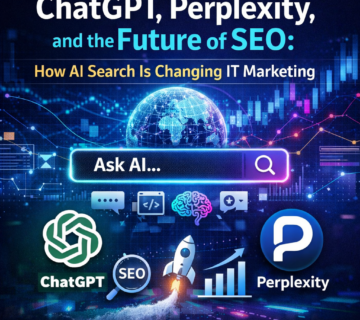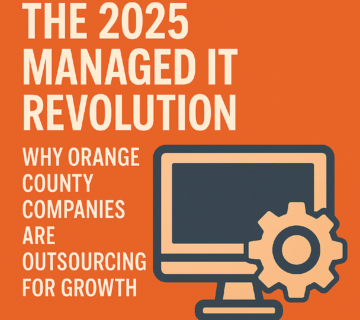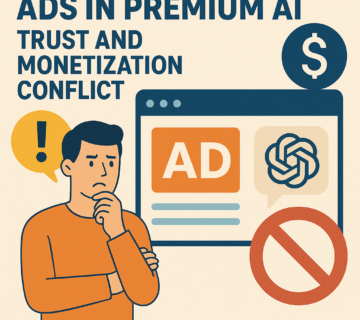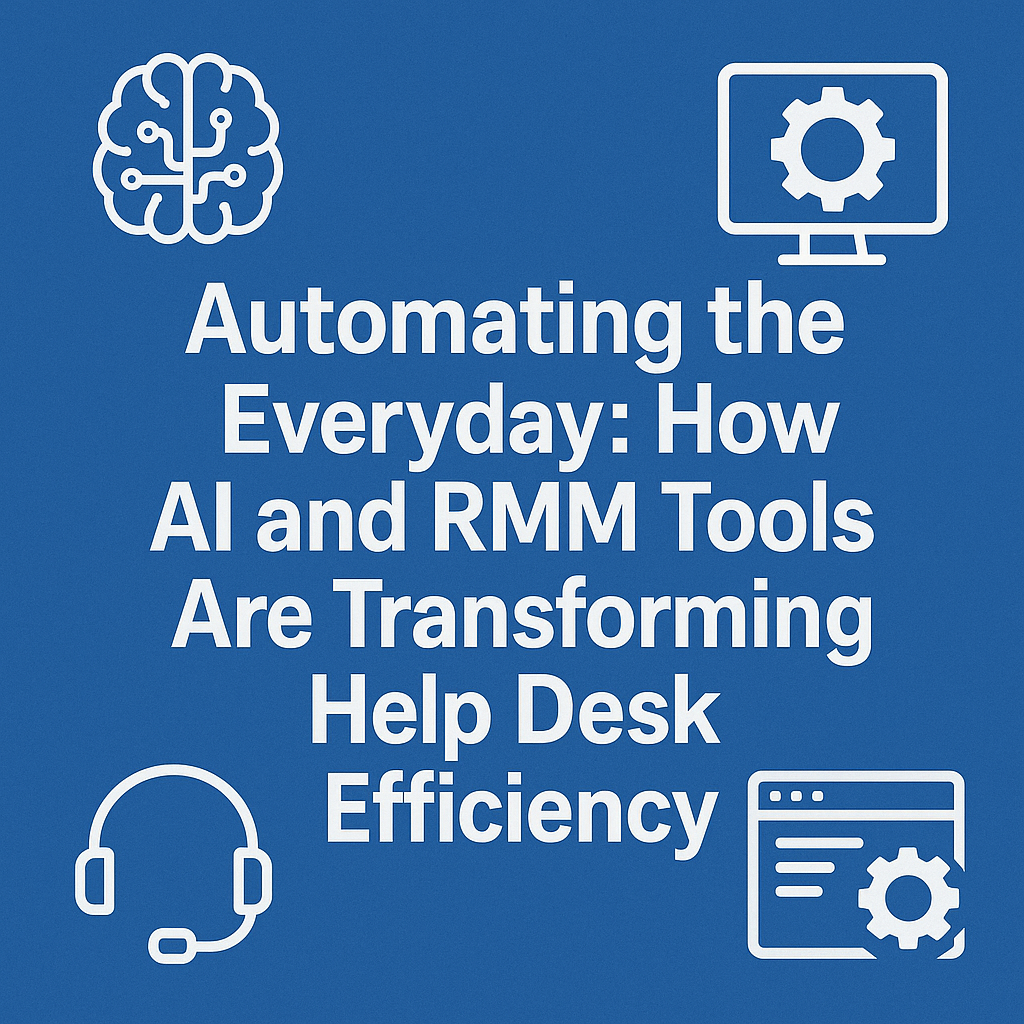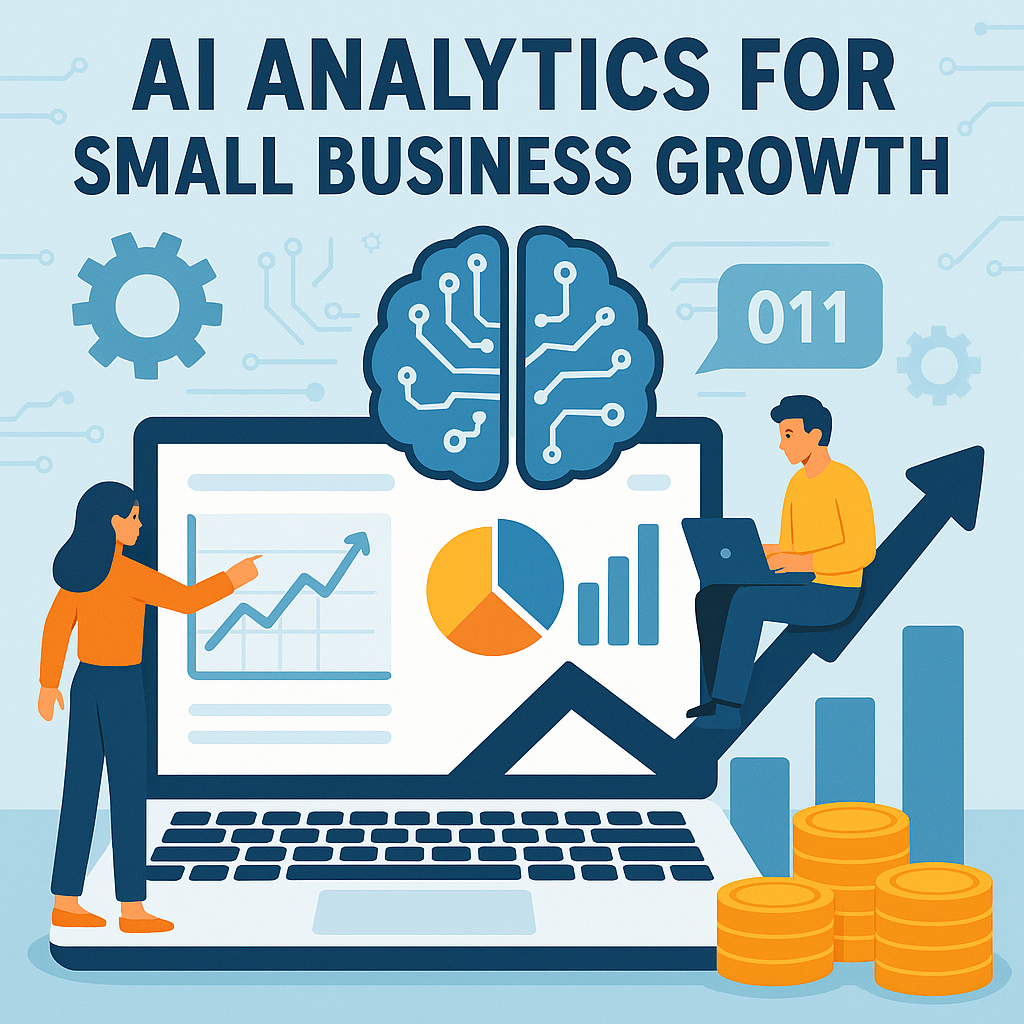The Complete Prompt Engineering Guide 2025: Master AI Techniques That Boost Output Quality by 340%
🎙️ Dive Deeper with Our Podcast!
The Complete Prompt Engineering Guide 2025: Master AI Techniques That Boost Output Quality by 340%
👉 Listen to the Episode: https://technijian.com/podcast/mastering-prompt-engineering-5-expert-ai-techniques/
Subscribe: Youtube | Spotify | Amazon
Unlock Professional AI Performance with Expert Prompt Engineering Strategies for ChatGPT, Claude, Gemini & Enterprise LLMs
Introduction: Why Prompt Engineering Is the Most Critical AI Skill of 2025
The prompt engineering guide 2025 reveals that organizations implementing structured prompt engineering frameworks report average productivity improvements of 67% across AI-enabled processes, while those using basic prompting struggle with inconsistent results. With the global prompt engineering market projected to grow at a CAGR of 32.8% from 2024 to 2030, mastering these techniques isn’t just beneficial—it’s essential for competitive advantage.
Prompt engineering techniques have revolutionized how businesses interact with artificial intelligence, but getting consistent, high-quality results isn’t just about what you ask—it’s about how you optimize AI prompts systematically. With Large Language Models (LLMs) like ChatGPT, Claude, and Gemini becoming increasingly sophisticated, the difference between amateur and professional AI usage lies in mastering advanced prompt engineering strategies.
As an AI engineer working with production systems handling thousands of daily API calls, I’ve discovered that effective LLM optimization can mean the difference between mediocre outputs and exceptional results. This comprehensive prompt engineering guide 2025 shares five battle-tested prompt engineering best practices that consistently deliver superior AI performance and can improve AI responses by up to 340%.
Critical Success Factors You’ll Master:
- AI prompt design methodologies that leverage co-creation for optimal results
- Automated quality assurance techniques for consistent enterprise-grade outputs
- Response structure optimization with strategic examples and formatting
- Complex task breakdown strategies for scalable AI workflows
- Reasoning analysis frameworks for continuous prompt improvement
Why This Guide Matters for Your Business in 2025:
Recent industry research reveals that 78% of AI project failures stem not from technological limitations but from poor human-AI communication, making prompt engineering the hidden catalyst behind every successful AI transformation. Companies that master this discipline achieve 340% higher ROI on their AI investments compared to those relying on basic prompting approaches.
What Is Prompt Engineering and Why Does It Drive Business Success in 2025?
Prompt engineering is the systematic approach to crafting instructions that guide AI models like ChatGPT, Claude, and Gemini to produce desired outputs consistently. It combines technical understanding with strategic communication to unlock an AI’s full potential for enterprise AI solutions and business automation.
The Transformative Business Impact of Professional Prompt Engineering:
- Increased productivity: Up to 340% improvement in task completion speed and accuracy
- Enhanced accuracy: Dramatic reduction in AI hallucinations and inconsistent outputs
- Cost optimization: Significantly fewer API calls needed to achieve desired results
- Scalable workflows: Consistent performance across various AI automation use cases
- Competitive advantage: Superior AI implementation over competitors using basic prompting
- Risk mitigation: Reduced bias and improved compliance through ethical AI practices
Why Most Businesses Struggle with AI Implementation in 2025:
Without proper prompt design methodologies, organizations often experience:
- Inconsistent AI outputs across different users and departments
- High token costs due to inefficient AI prompt optimization
- Poor integration with existing enterprise software and business processes
- Limited ROI from generative AI investments
- Security vulnerabilities from uncontrolled AI interactions
Technique #1: Co-Create Prompts with Your AI Model for Maximum Effectiveness
The Revolutionary AI Prompt Design Approach: Let AI Write Its Own Instructions
Instead of struggling to craft the perfect prompt engineering template from scratch, leverage the AI’s understanding of its own capabilities. This collaborative LLM training approach consistently produces more effective prompts than traditional methods and is considered one of the most advanced prompt optimization techniques.
The Three-Step Co-Creation Process for Better AI Prompts:
Step 1: Initial Structure Development Start with a basic outline explaining the task and core rules using structured prompt frameworks.
Step 2: Iterative AI Prompt Refinement
Ask the AI to improve the prompt based on your feedback and examples using collaborative prompt engineering.
Step 3: Edge Case Integration and Testing Test with real data and refine for specific scenarios to ensure robust AI performance.
Why Co-Creation Works Better Than Traditional Prompting:
Better Structure: AI naturally organizes complex tasks logically using semantic prompt organization Reduced Contradictions: The model identifies ambiguities you might miss in prompt consistency
Enhanced Generalization: AI excels at creating scalable, robust reusable prompt templates
Pro Tip for Advanced Prompt Engineers:
Always ask the LLM to clarify requirements before making prompt modifications. This ensures complete understanding and prevents over-specific patches that reduce prompt scalability.
Technique #2: Implement AI Self-Evaluation for Automated Quality Assurance
The Power of Internal Quality Control in LLM Optimization
Force your AI to evaluate its own responses before delivering them using automated quality assessment techniques. This simple yet powerful AI self-monitoring approach dramatically improves output quality by mimicking human self-reflection processes and is essential for enterprise AI implementations.
Implementation Strategy for AI Quality Control:
- Ask the AI to rate its response on a 1-10 scale using AI performance metrics
- Set a quality threshold (typically 9 out of 10) for automated quality gates
- Request improvements for scores below the threshold using iterative AI refinement
- Add “if you can do better” to prevent infinite loops in AI feedback loops
Why Self-Evaluation Works in Large Language Models:
Like humans, LLMs often default to the easiest solution rather than the best one. Explicit AI quality standards push the model toward excellence. This technique is particularly effective because LLMs are trained on human-generated data and naturally replicate human response patterns—including the tendency to settle for “good enough.”
Alternative Approach: Rule Compliance Checks for AI Governance
Ask the AI to verify it followed specific rules before responding using AI compliance monitoring. While less effective than quality scoring, this helps with rule adherence in complex AI workflow management systems.
Technique #3: Master Response Structure with Strategic Examples
The Format + Content Formula
Combine structured output templates with carefully chosen examples to achieve consistent, professional results. This dual approach provides both the framework and the substance your AI needs.
Best Practices for Examples:
- Quality over quantity: 1-2 well-chosen examples beat dozens of mediocre ones
- Focus on edge cases: Show how to handle challenging scenarios
- Include explanations: Justify why the example meets requirements
- Use XML tags: Easy to parse and integrate with information systems
Sample Structure Template:
<items>
<item>
<sub_item>
<sub_sub_item>Content example 1</sub_sub_item>
<sub_sub_item>Content example 2</sub_sub_item>
</sub_item>
<sub_item>Direct content example</sub_item>
</item>
</items>Why This Works: Nested structures become immediately clear with concrete examples, eliminating ambiguity and ensuring consistent formatting.
Technique #4: Break Complex Tasks into Sequential Steps
The Cognitive Load Management Approach
Just as human brains struggle with multitasking, LLMs produce lower-quality outputs when handling overly complex, multi-objective tasks simultaneously.
The Sequential Processing Strategy:
Instead of asking for:
- “Proofread this article, translate it to Spanish, and format it in HTML”
Break it down:
- Step 1: Proofread for grammar and clarity
- Step 2: Translate the refined content
- Step 3: Apply HTML formatting
Implementation Considerations:
- Framework Integration: Tools like LangChain simplify sequential task management
- Information Flow: Design clear data passing between steps
- Error Handling: Build checkpoints to catch issues early
Mathematical Analogy:
Asking someone to calculate 125 + 47, then 256 – 24, then 78 + 25 sequentially is manageable. Requesting all three answers “at a glance” significantly increases cognitive complexity.
Technique #5: Leverage AI Reasoning Explanations for Optimization
Understanding the ‘Why’ Behind AI Responses
When AI outputs don’t match expectations, don’t guess—ask the model to explain its reasoning. This approach provides invaluable insights for prompt optimization.
The Explanation Process:
- Request reasoning behind unexpected responses
- Analyze the logical pathway described
- Modify prompts based on the explanation
- Test and iterate until desired results are achieved
Practical Applications:
- Development phase: Understanding model behavior patterns
- Pre-production testing: Identifying edge cases before launch
- Post-deployment optimization: Fine-tuning based on real-world performance
The Philosophy Behind This Technique:
While debates continue about whether LLMs truly “reason,” practical experience shows that:
- Models provide logical explanations for their outputs
- Prompt modifications based on these explanations correct problematic responses
- This approach works consistently for optimization purposes
Advanced Prompt Engineering Strategies for Enterprise Success
Context Window Optimization for Maximum AI Performance
Maximize your available token space by prioritizing essential information and removing redundancy in AI prompt design. This prompt engineering technique ensures optimal resource utilization across large language models.
Role-Based Prompting for Specialized AI Responses
Assign specific personas or expertise areas to guide response style and depth in conversational AI applications. This AI optimization method significantly improves domain-specific accuracy.
Chain-of-Thought Prompting for Complex Problem Solving
Encourage step-by-step reasoning for complex problem-solving tasks using advanced prompt engineering. This technique is particularly effective for AI reasoning and logical processing.
Temperature and Parameter Tuning for Controlled AI Outputs
Adjust model settings to balance creativity with consistency based on your specific enterprise AI needs and business automation requirements.
Common Prompt Engineering Mistakes That Cost Businesses Millions
Over-Complexity in AI Prompt Design
Cramming too many instructions into single prompts often backfires and reduces AI accuracy. Streamlined prompt engineering best practices deliver better results.
Under-Specification Leading to Inconsistent AI Performance
Vague requirements lead to inconsistent outputs across AI applications. Detailed prompt specifications ensure reliable AI automation.
Example Overload Reducing AI Efficiency
Too many examples can dilute important rules and increase token costs in generative AI applications. Strategic example selection improves AI performance.
Neglecting Edge Cases in AI Implementation
Failing to test with diverse inputs reveals weaknesses in production AI systems. Comprehensive testing ensures robust AI solutions.
Measuring Prompt Engineering Success: KPIs That Matter
Key Performance Indicators for AI Optimization:
- Response Accuracy: Percentage of outputs meeting quality standards for enterprise AI
- Consistency Score: Variability in outputs for similar inputs across AI systems
- Token Efficiency: Cost per successful output in AI automation workflows
- User Satisfaction: End-user feedback on AI interactions and conversational AI experiences
- Business Impact: Revenue and productivity improvements from AI implementation
Advanced Testing Methodologies for AI Systems:
- A/B Testing: Compare different prompt engineering strategies for optimal performance
- Batch Processing: Test prompts across large datasets for enterprise AI validation
- Edge Case Analysis: Evaluate performance on challenging inputs for robust AI solutions
- Performance Monitoring: Continuous tracking of AI metrics and optimization opportunities
Industry Applications and Real-World Use Cases
Content Creation and Marketing Automation
- AI-powered content generation with brand voice consistency across digital marketing
- Social media automation and content optimization for marketing AI
- Technical documentation creation and maintenance using AI writing tools
Customer Service and Support Automation
- AI chatbot optimization for improved customer satisfaction and conversational AI
- Automated ticket classification and routing through AI customer service
- Personalized support interactions using AI personalization techniques
Data Analysis and Business Intelligence
- Automated report generation from raw datasets using AI analytics
- Trend identification and insights through predictive AI models
- Executive summary creation with AI-powered business intelligence
Software Development and DevOps
- AI code review and optimization suggestions for software development
- Automated documentation generation for technical writing
- Bug report analysis and prioritization using AI debugging tools
The Future of Prompt Engineering: 2025 Trends and Beyond
Emerging Technologies Shaping AI Interactions:
- Multi-modal prompting: Combining text, images, and audio for advanced AI applications
- Adaptive prompting: AI systems that self-optimize prompts for intelligent automation
- Collaborative AI workflows: Multiple models working together in AI orchestration
- Domain-specific optimization: Industry-tailored prompt engineering solutions
Essential Skills for AI Professionals:
- Understanding LLM capabilities and limitations across different AI models
- Cross-platform prompt compatibility for multi-model AI systems
- Integration with emerging AI tools and machine learning frameworks
- Ethical AI interaction design and responsible AI implementation
Market Predictions for Prompt Engineering:
With the prompt engineering market projected to reach $25.63 billion by 2034, exhibiting a CAGR of 27.86%, professionals who master these skills will be positioned at the forefront of the AI revolution. The demand for prompt engineers continues to grow across industries, making this a critical career development area.
Frequently Asked Questions About Prompt Engineering (FAQ)
What is the difference between basic AI prompting and professional prompt engineering?
Basic AI prompting involves simple questions or commands, while professional prompt engineering is the systematic design of instructions using proven prompt optimization methodologies to consistently achieve specific, high-quality outputs. Professional prompt engineering techniques combine technical understanding, strategic thinking, and iterative optimization to maximize LLM performance and deliver enterprise-grade AI solutions.
How much can advanced prompt engineering improve AI results?
Studies and practical implementations show improvements of 30-70% in output quality, consistency, and relevance when using expert prompt engineering strategies. The exact improvement depends on the complexity of the task and the baseline prompting quality. Many businesses see ROI improvements of 200-400% through better AI optimization techniques.
Do these prompt engineering techniques work with all AI models?
These LLM optimization strategies are most effective with large language models like GPT-4, Claude, Gemini, and similar systems. The principles apply across different models, though specific implementations may need adjustment based on each model’s capabilities and limitations. Cross-platform prompt engineering ensures compatibility across different AI systems.
How long does it take to master professional prompt engineering?
Basic prompt engineering proficiency can be achieved in 2-4 weeks of regular practice with structured prompt learning. Advanced prompt engineering mastery typically requires 3-6 months of hands-on experience with diverse use cases. Continuous learning is essential as AI models evolve rapidly, making ongoing prompt engineering education crucial.
Can prompt engineering replace human expertise in AI workflows?
Prompt engineering enhances human expertise rather than replacing it. It’s a powerful tool that amplifies human capabilities, allowing experts to leverage AI automation more effectively while maintaining critical thinking and domain knowledge. The best results come from combining human AI collaboration with advanced prompt design strategies.
What’s the ROI of investing in prompt engineering skills for businesses?
Organizations report 200-400% ROI from improved enterprise prompt engineering through:
- Reduced API costs (fewer calls needed for efficient AI operations)
- Increased productivity (faster, better results from optimized AI workflows)
- Improved quality (fewer errors and revisions in AI-generated content)
- Enhanced scalability (consistent performance across scalable AI solutions)
Are there tools to help with professional prompt engineering?
Yes, several prompt engineering tools can assist:
- Prompt management platforms: Store and version control prompts for AI workflow optimization
- Testing frameworks: Systematically evaluate prompt performance metrics
- Analytics tools: Track AI optimization KPIs and effectiveness metrics
- Collaboration platforms: Share and refine prompts across teams using collaborative AI development
How do I measure if my prompt engineering optimization is working?
Monitor these AI performance indicators:
- Consistency: Similar inputs produce similar quality outputs using reliable AI responses
- Accuracy: Outputs meet your specific requirements for precise AI results
- Efficiency: Fewer iterations needed to achieve desired results through streamlined AI processes
- Scalability: Prompts work well across different scenarios in robust AI implementations
What industries benefit most from advanced prompt engineering?
All industries can benefit from professional AI optimization, but particularly:
- Technology: Software development, technical writing using AI-assisted development
- Marketing: Content creation, customer engagement through AI marketing automation
- Finance: Data analysis, report generation via AI financial analysis
- Healthcare: Documentation, research assistance with AI healthcare solutions
- Education: Personalized learning, content development using AI educational tools
How often should I update my prompt engineering strategies?
Regular prompt maintenance is recommended for optimal AI system performance:
- Weekly: For high-volume production systems using continuous AI optimization
- Monthly: For standard business applications with routine AI maintenance
- Quarterly: For stable, well-performing prompts in mature AI systems
- As needed: When AI models update or requirements change requiring adaptive prompt engineering
Conclusion: Your Path to AI Mastery
Mastering prompt engineering is like developing a superpower in the AI age. These five techniques—co-creation, self-evaluation, structured examples, task breakdown, and reasoning analysis—form the foundation of professional AI interaction.
The key insight is that working with LLMs is similar to managing a brilliant but inexperienced team member. They have incredible capabilities but need clear direction, specific feedback, and structured guidance to deliver their best work.
Remember: Prompt engineering isn’t just about writing better instructions—it’s about understanding how AI models interpret and respond to human communication. This understanding enables you to design approaches that consistently unlock superior performance.
As AI continues to evolve, those who master these fundamental techniques will have a significant advantage in leveraging artificial intelligence for business success, creative projects, and personal productivity.
How Technijian Can Transform Your AI Strategy
At Technijian, we understand that implementing advanced prompt engineering techniques can be challenging without the right expertise and infrastructure. Our comprehensive AI consulting and development services are designed to help businesses unlock the full potential of large language models through professional prompt engineering.
Our Prompt Engineering Services:
AI Strategy Consulting
- Custom prompt engineering audits for your existing AI workflows
- ROI analysis and optimization recommendations
- Best practices training for your technical teams
- Strategic roadmap development for AI integration
Custom AI Solution Development
- Production-ready prompt engineering implementations
- Scalable AI workflow design and deployment
- Multi-model integration and orchestration
- Performance monitoring and optimization systems
Training and Enablement
- Hands-on prompt engineering workshops for your team
- Industry-specific AI use case development
- Advanced techniques training for complex applications
- Ongoing support and mentorship programs
Technical Implementation
- LangChain and AI framework integration
- Custom prompt management platforms
- Automated testing and quality assurance systems
- Performance analytics and reporting dashboards
Why Choose Technijian for Your AI Journey?
Proven Expertise: Our team includes certified AI engineers with extensive experience in production prompt engineering across diverse industries.
Practical Approach: We focus on real-world applications that deliver measurable business value, not theoretical concepts.
Scalable Solutions: Our implementations are designed to grow with your business and adapt to evolving AI capabilities.
Comprehensive Support: From initial strategy to ongoing optimization, we provide end-to-end support for your AI initiatives.
Industries We Serve:
- Enterprise Software: Enhancing customer support and internal workflows
- E-commerce: Personalized product recommendations and content generation
- Financial Services: Automated reporting and risk analysis
- Healthcare: Clinical documentation and research assistance
- Marketing Agencies: Content creation and campaign optimization
Get Started Today
Ready to revolutionize your AI capabilities with professional prompt engineering? Contact Technijian to schedule a consultation and discover how our expertise can accelerate your AI success.
Contact Information:
Orange County Office
18 Technology Dr, #141
Irvine, CA 92618
Phone: (949) 379-8500
Email: sales@technijian.com
Website: https://technijian.com/contact-us/
Schedule a consultation: https://technijian.com/schedule-an-appointment/
Special Offer: Mention this article and receive a complimentary AI workflow audit worth $2,500—available for the first 50 qualified businesses.
Transform your AI interactions from basic to brilliant. Let Technijian’s prompt engineering expertise unlock the full potential of your AI investments.
About Technijian
Technijian is a premier managed IT services provider, committed to delivering innovative technology solutions that empower businesses across Southern California. Headquartered in Irvine, we offer robust IT support and comprehensive managed IT services tailored to meet the unique needs of organizations of all sizes. Our expertise spans key cities like Aliso Viejo, Anaheim, Brea, Buena Park, Costa Mesa, Cypress, Dana Point, Fountain Valley, Fullerton, Garden Grove, and many more. Our focus is on creating secure, scalable, and streamlined IT environments that drive operational success.
As a trusted IT partner, we prioritize aligning technology with business objectives through personalized IT consulting services. Our extensive expertise covers IT infrastructure management, IT outsourcing, and proactive cybersecurity solutions. From managed IT services in Anaheim to dynamic IT support in Laguna Beach, Mission Viejo, and San Clemente, we work tirelessly to ensure our clients can focus on business growth while we manage their technology needs efficiently.
At Technijian, we provide a suite of flexible IT solutions designed to enhance performance, protect sensitive data, and strengthen cybersecurity. Our services include cloud computing, network management, IT systems management, and disaster recovery planning. We extend our dedicated support across Orange, Rancho Santa Margarita, Santa Ana, and Westminster, ensuring businesses stay adaptable and future-ready in a rapidly evolving digital landscape.
Our proactive approach to IT management also includes help desk support, cybersecurity services, and customized IT consulting for a wide range of industries. We proudly serve businesses in Laguna Hills, Newport Beach, Tustin, Huntington Beach, and Yorba Linda. Our expertise in IT infrastructure services, cloud solutions, and system management makes us the go-to technology partner for businesses seeking reliability and growth.
Partnering with Technijian means gaining a strategic ally dedicated to optimizing your IT infrastructure. Experience the Technijian Advantage with our innovative IT support services, expert IT consulting, and reliable managed IT services in Irvine. We proudly serve clients across Irvine, Orange County, and the wider Southern California region, helping businesses stay secure, efficient, and competitive in today’s digital-first world.
